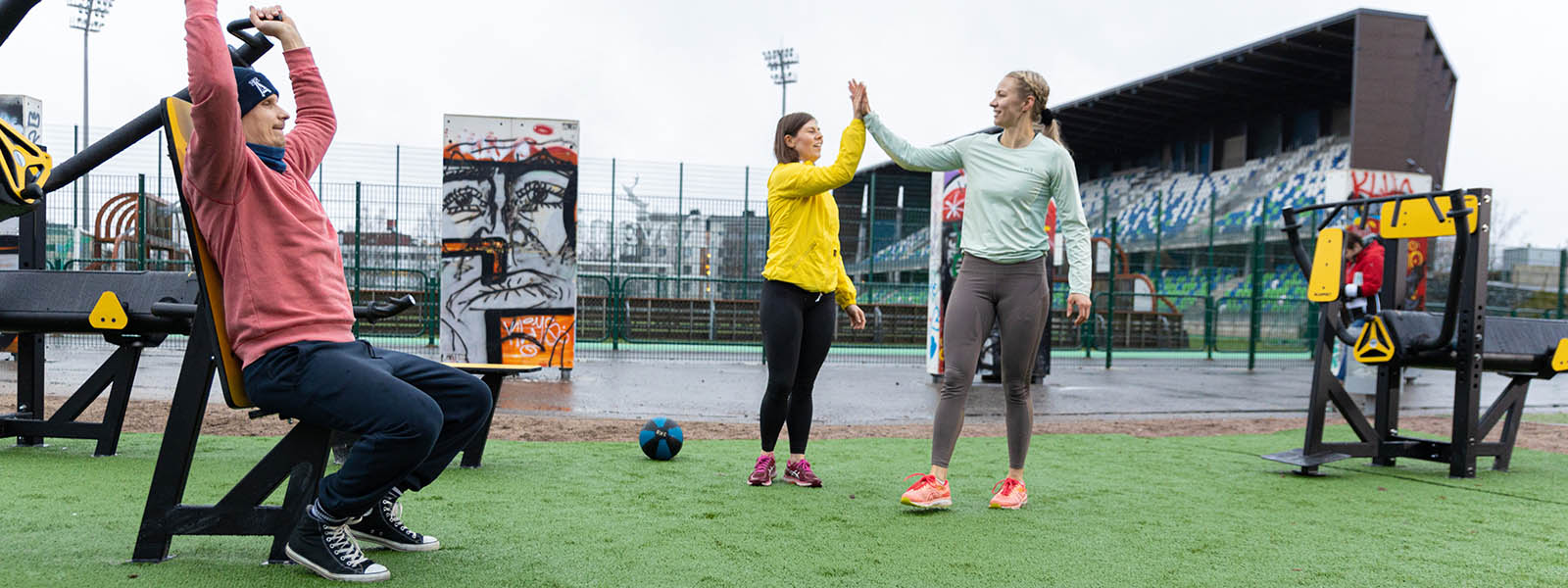
Recycling of playground equipment
Even when the playgrounds and sports areas are maintained correctly, all the equipment will end their life span at some point. All the parts of the Lappset equipment can be recycled or used to generate energy.
Recycling playground equipment is an important part of preserving the environment, as it helps to reduce waste and pollution. When playgrounds are recycled responsibly, materials such as plastic, metal and rubber are separated and reused in a variety of ways.
Recycling of playground and sports equipment at the end of the life cycle
Recycling playground and sports equipment reduces the demand for new material, which means less energy and natural resources are needed to create new items. This ultimately decreases our carbon footprint and helps protect natural habitats from harm caused by unsustainable production practices. Additionally, by recycling play and sports equipment, we can keep hazardous chemicals out of landfills where they could potentially contaminate groundwater supplies. Recycling playground equipment has various environmental benefits that help contribute to a healthier planet for future generations.
General recycling instructions
The materials collected and collection instructions can vary from one location and company to the next. The instructions below have been drawn up following the usual practice.
However, you should always check the local recycling and collection instructions.
- Impregnated wooden parts can be reused in structures or used for energy recovery at a hazardous waste incineration plant. Parts for disposal are taken to a collection point for impregnated wood.
- High-Pressure Laminated panels (HPL) can be reused in structures or used for energy recovery at a licensed waste incineration plant. Panels for disposal are taken to an incineration plant.
- Metals are recyclable and can be processed as recycled raw material by industry. Metal parts are sorted and taken to a metal collection point.
- Many plastic parts are furnished with a code that shows what material the parts are made of. This code helps identify if the part can be recycled or used for energy at a licensed waste incineration plant. Plastic parts are taken to a plastic collection point.
- Paper, paperboard, and cardboard are delivered to a waste treatment plant for recycling. They are sorted and taken to a collection point.
- Wooden packaging of equipment and wooden parts can be partially recycled. For disposal, wood can be used to replace fossil fuels to generate energy and heat. Depending on the type of wood waste, it can be used at a biomass-fired energy plant alongside other fuels or at a licensed waste incineration plant. Wood waste is taken to a collection point. All components containing rubber or rubber shred (like safety tiles) are recyclable and can be used again. Rubber and tyre chippings are used to replace non-renewable natural materials.
- Steel-reinforced ropes and nets can be crushed to sort out plastic and metal. Plastic is used for energy recovery, and metal is recycled material. Ropes and nets can usually be taken to a metal collection point.

-